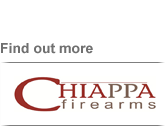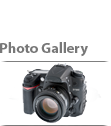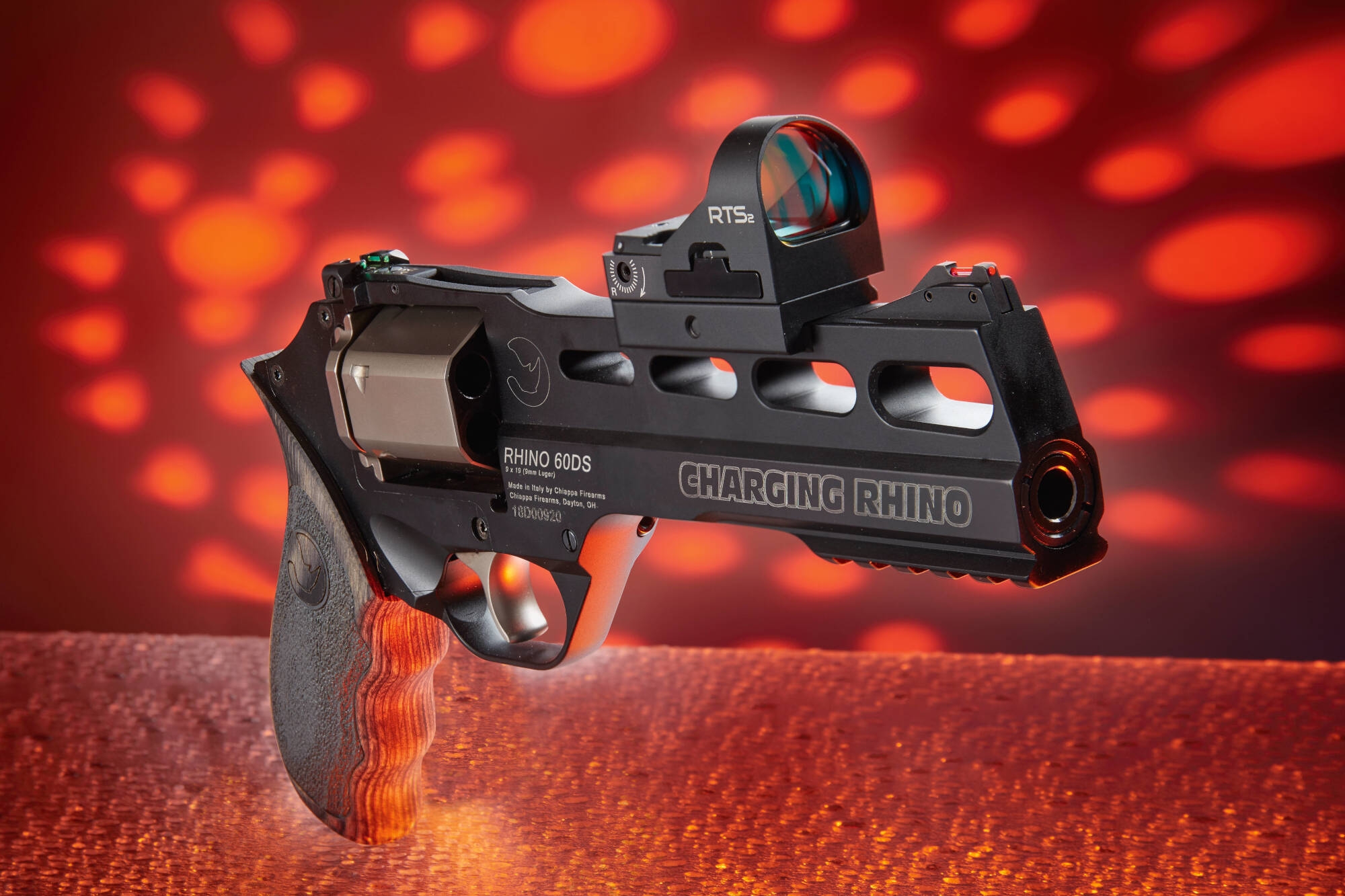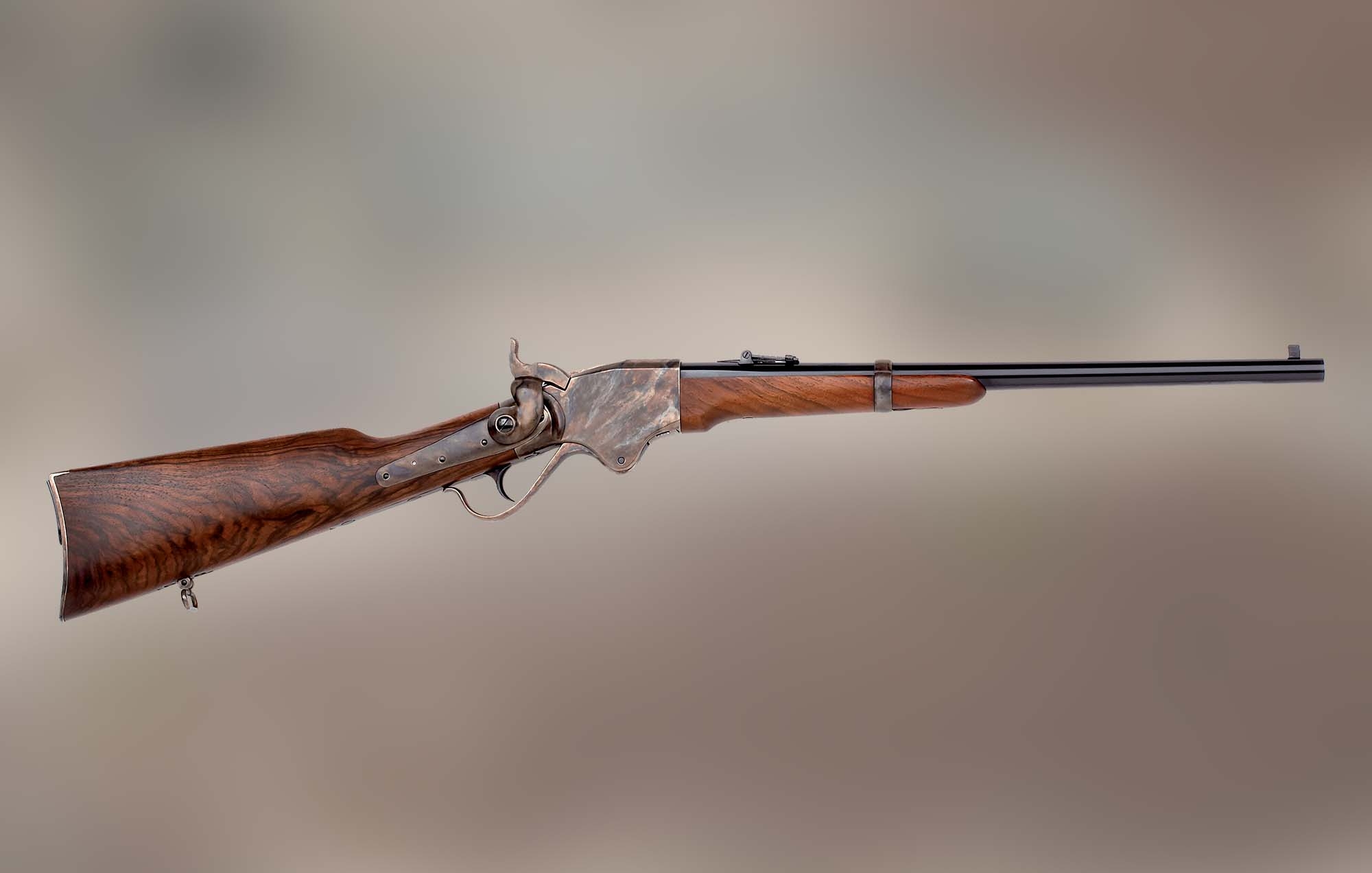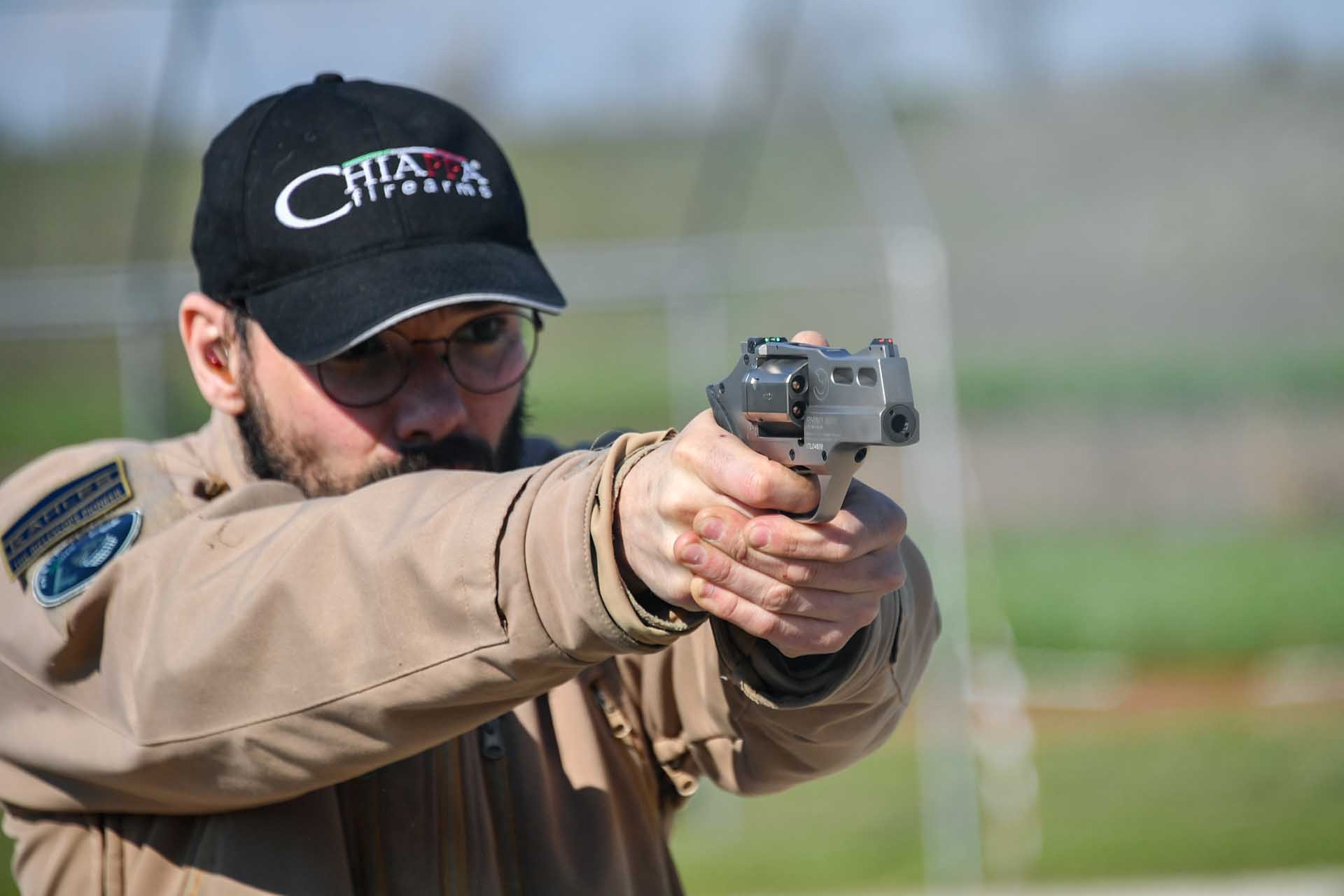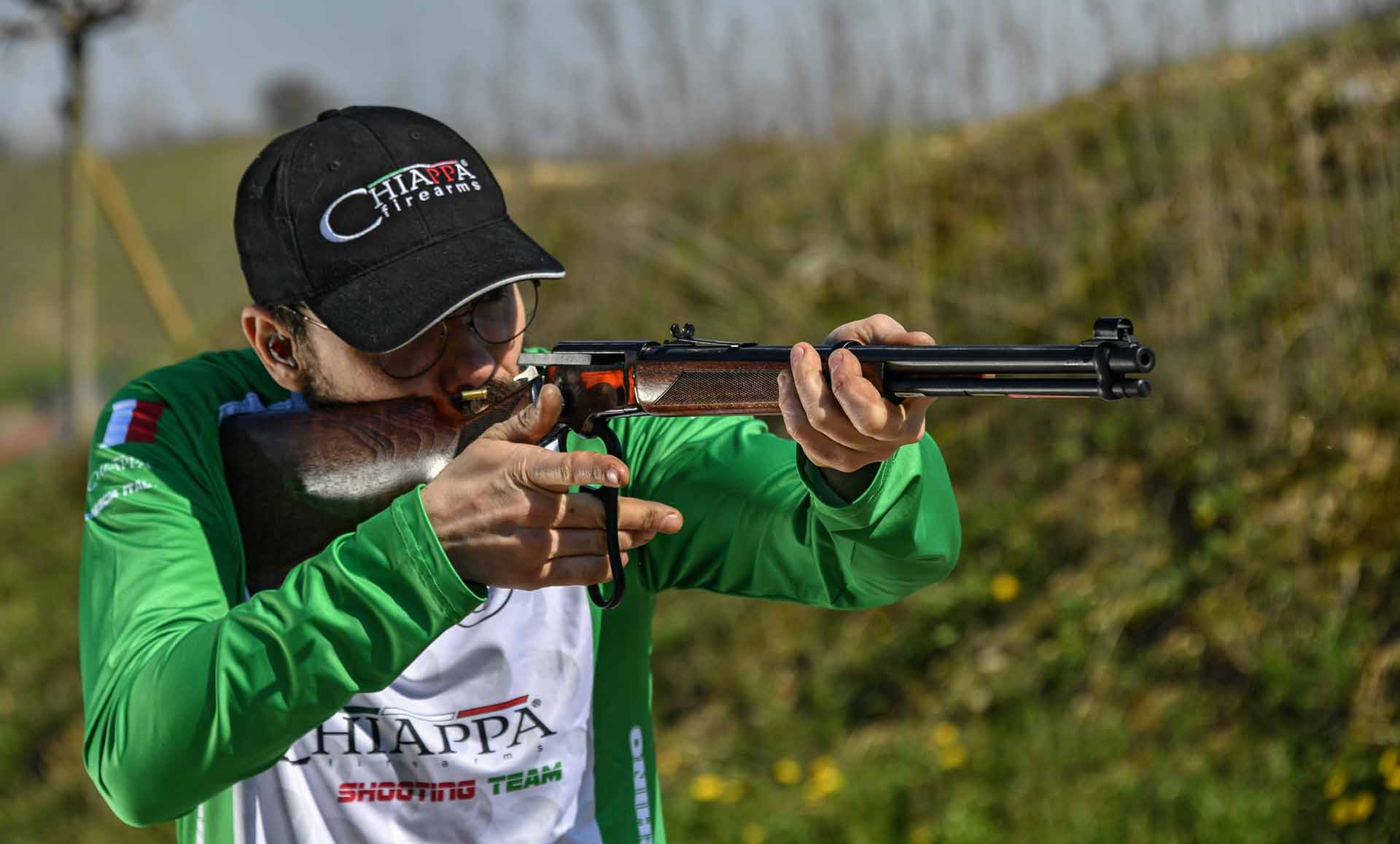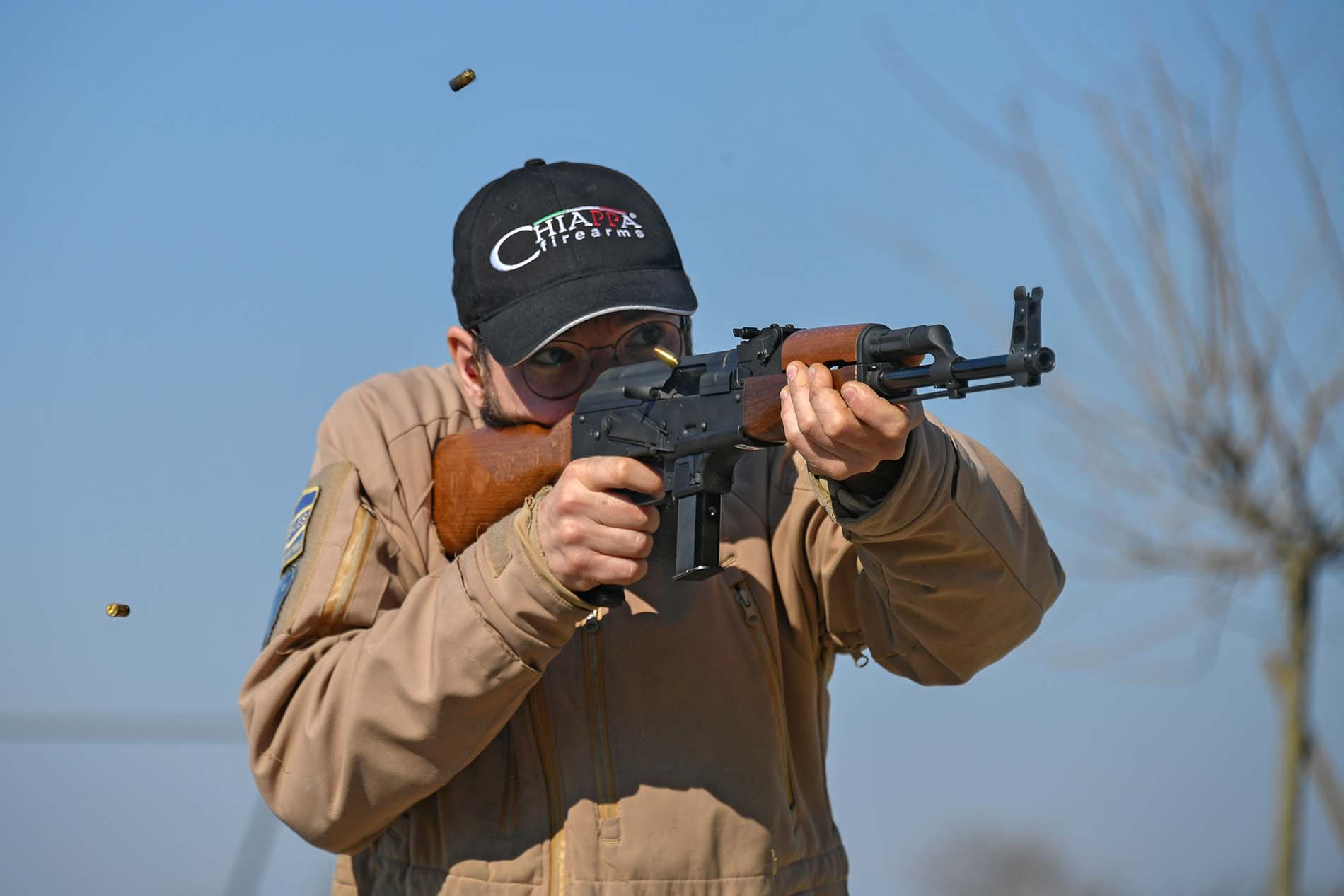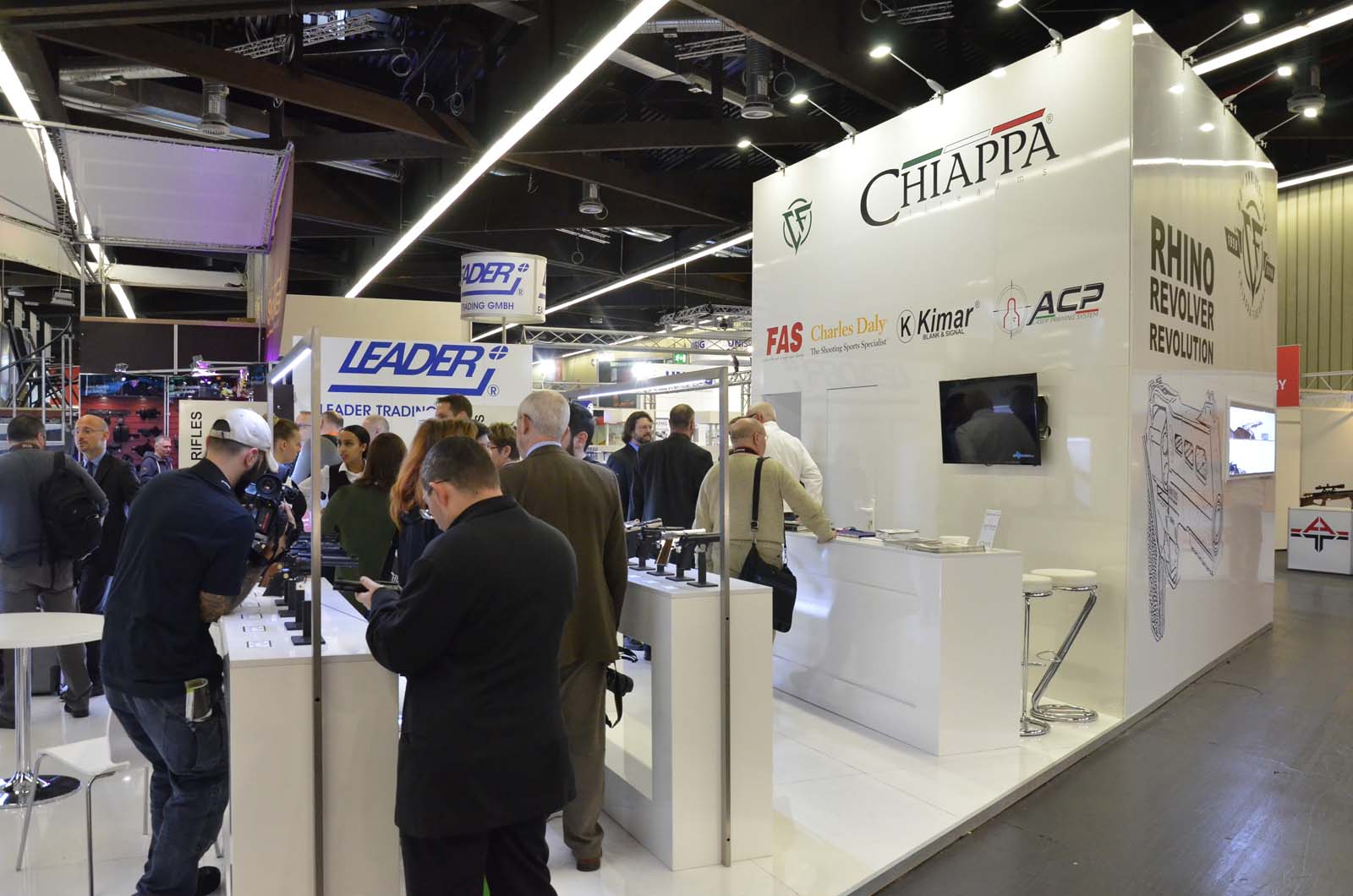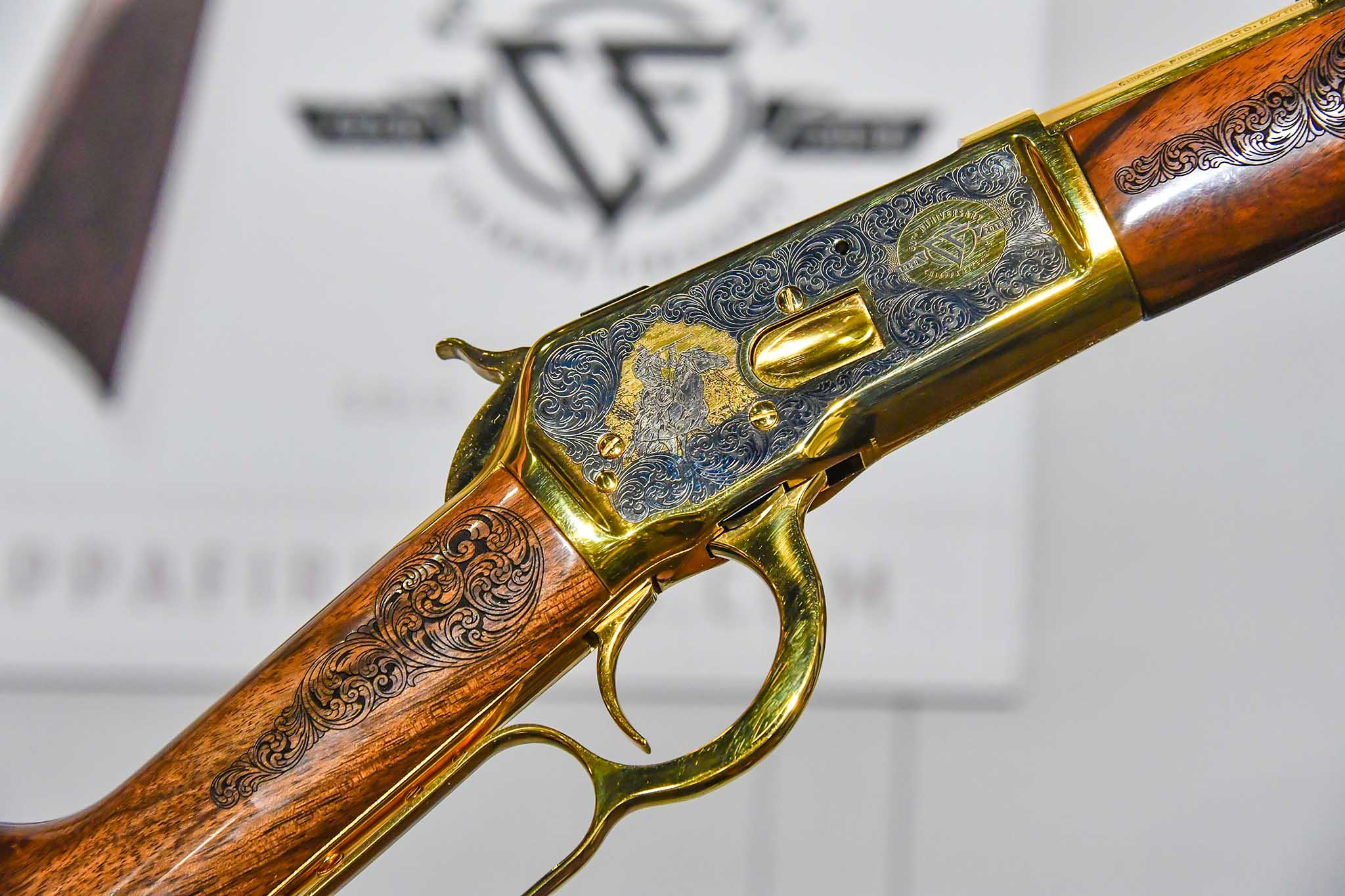The theory: Many observers call the Rhino an “upside down” revolver. The reason? The Rhino shoots from the lower chamber of its six shot cylinder and not from the top, as is normal with every other traditional revolver. Consequently, the ejector rod is positioned above the barrel, right in the shell. For the same reason, the majority of the internal parts are located on the bottom of the receiver compared to the traditional models. It was Emilio Ghisoni who had the idea of this layout in the 1980s. However, his Mateba revolver failed to take root. The reason of manufacturers to place the tube on the lower part is clear. The revolver has always struggled with the leverage effect, which further accentuates felt recoil and muzzle climb.
Letʼs talk physics: the recoil is the result of the counterforce generated by the acceleration of the bullet down the barrel, propelled by the explosive forces of the burning powder. This force axially operates along the bore of the barrel and is directed backwards. Experience tells us that when we reduce the distance between the axis of the barrel and the imaginary extension of the wrist-forearm line on a handgun, felt recoil also decreases. Thus, the gun designers usually place the barrel so that it is lowered as far as possible in the hand of the shooter. So, it is considerably easier to control the weapon. The rounded “plow handle”, typical of the Colt Single Action revolver can slide in the hand even with strong thrusts and thus reduces felt recoil. It is different for DA revolvers with their recoil peak vector just above the grip. For design reasons and also in this case, the axis of the barrel is quite higher than the wrist-forearm line. However, the reduced tensions allow for a relatively firm and safe grip, whereby the recoil transfers a corresponding greater energy to the hand of the shooter. The aforementioned theoretical lines are not contradicted on the Rhino. However, on this gun they are closer to each other than they have ever been on any other revolver or gun, with the exception of a few .22 caliber Short sports guns.
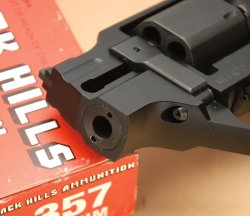
On the outside: the back of the grip is different, it is neither rounded nor pointed, and tapers into a spur in the crease between the thumb and forefinger. It is also ergonomic: The Colt M1911 A1 type grooving, respectively for the finger and thumb, milled on both sides of the receiver, allow the shooter to easily reach the trigger. Even the cylinder, with its hexagonal shape and distinctive appearance, has surprises in store. It turns to the right towards the shooter just like the majority of Colt DA revolvers. A flat crescent-shaped blade is used to open the cylinder. It has a thumb rest on the left of the receiver, directly under the barrel. This is an unusual position because the release blade is usually found on the extension of the cylinder axis. To open it, easily move the release with the thumb 5 mm downwards. The cylinder will only move when the weapon is not loaded. The swinging arm of the cylinder engages via spherical stops in the upper part of the receiver and not on the front of the ejector. This type of ball stops on the yoke of the cylinder was already used for decades on heavy PPC revolvers. The cylinder is locked by a spring-loaded pin, located on the rear end of the ejector rod centered in the star-shaped extractor.
The function check has other unusual details for a revolver. In fact, what, at first glance, looks like a regular revolver barrel is a real weapon component. The real firing pin is nestled deep inside the mechanics. After loading, the spur, that has longitudinal milling on the upper part to increase grip, returns to its release position. The revolver has three automatic safety latches: the trigger only works if the cylinder is completely closed. The weapon only shoots when the cylinder latch engages exactly in the recess corresponding to the cylinder. This ensures that the cylinder and barrel bores are perfectly aligned. The firing pin has a safety latch against an accidental discharge due to dropping the weapon. And, the new production series promises increased safety. In fact, a red indicator pin on the left of the rear sight indicates when the revolver is cocked in single action mode. On the double action mode, the indicator lifts up upon cocking and then returns into position after shooting.
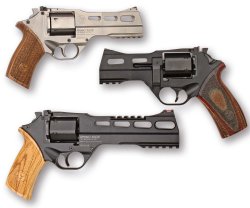
Chiappa supplies its Rhino in different barrel lengths, from two to six inches. The shortest model, the 20DS does not have an adjustable rear sight. In this case, the rear sight is simply a right angle recess milled in the hammer. A ramped sight attached to the base by two elastic pins forms the counterpart. An integrated red fiber can replace this. The models with longer barrel have rear sights that are micro metrically adjustable in height and drift. As an alternative, they are also provided with two neon green light collector bars, beside the right angle rear sight. On the four and five-inch models, the designers have also milled a Picatinny base with five transverse grooves from the lower side of the barrel shroud. The six-inch model has a similar additional guide on top, one-third in front of the sight line, which allows mounting an optical sight device.
There are several grip variants for the Rhino models. The 20DS has, as standard, a grey soft rubber grip, which is made of walnut on other models. However, the range of options includes an olive wood or plywood grip in various colors, in large, medium or small sizes; unlike the 20DS, the holster is optional. There are several gun cases to be proposed as an accessory. Loader clip for six cartridges and the so-called “performance kit” to reduce DA resistance complete the offer. The workmanship on the release is reversed to the gunsmith.
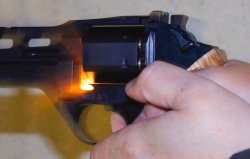
In practice: to test the vaunted advantages of the Rhino concerning muzzle climb and recoil, the tester focused on the model weighing 700 grams and with a shorter barrel. In fact, if this works then the heavier models should work even better. The little revolver has certainly roared and spat fire just like any other regular snub nose. But the perceived recoil was relatively small. With a .357 load (125 grains Soft Point bullet), it fired so pleasantly that the shooter almost zealously insisted on firing the following shot.
It was surprising that it was easier than expected to overcome the relative high resistance of the DA shooting, measured at 5500 g. The shooting groups also proved that this is an accurate revolver. A group of six shots from a good distance of 7.5 m (25 feet) remained within the "ten" of the PPC target (10x150mm), three shots in the X (50x75mm). Naturally, from two inches with 135-grain .357 hollow point Black Hills Magnum ammunition. The additional .38 tried were almost exactly like the small 22 caliber cartridges. The soft rubber grip also contributes to this. A shot from a .357 with 158 grains, soft point flathead, shot in order to compare it with the 40DS model with plywood handle gave a considerable shock to the hand. However, in this case, it remained within muzzle climb limits. The weapon was very stable in shooting just like regular revolvers.
As shown by a whole series of photos of “do nots” in the service manual, when shooting, if possible, do not keep both thumbs parallel under the cylinder and do not place the index finger of the hand not shooting on the receiver. In fact, the shooter risks bruising the end of his finger if not burning it. Flames and debris escape the gap between the barrel and cylinder of the Rhino. Because the barrel is so low, these flames and debris immediately reach to the finger below. The weapon is perhaps not yet fully mature. In fact, when shooting with both hands there is distortion with negative backlash, otherwise you risk burning your fingers. A remote differentiator could certainly solve the problem. Conclusion: Rhino models offer a significantly lower muzzle climb than its competitors. Furthermore, the issue of the reduction of recoil caused by the lowered barrel is debatable, at least by the energy conservation principle. It remains a hope of the father of the idea. However, the Rhino shows that there is still room for intelligent innovations in the development of DA revolvers. Shooting with this weapon is always fun. And you can easily hit the mark at least as well as with the common defense or sport revolvers: ideal for those who want something different than usual revolvers.
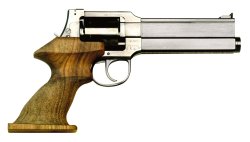
The predecessors. At first, many observers just believed the Rhino to be a copy of the more than twenty-year-old Mateba revolver. And no wonder. In fact, both models are by the same designer: Emilio Ghisoni. Ghisoni has steadily continued to develop the concept of the upside down revolver and, after the first .357 Mateba 2006M model and the seven shot 2007 sports model, he produced the “Pistolver” Unica model in the mid-1990s. It worked like a breech loading with recoiling cylinder and simultaneous armament of the hammer. While the series of the 2006 models still had a closed receiver and the cylinder turned upwards, the Unica had an opened receiver with a cylinder that turned sideways. It was available in the .44 Magnum and the .454 Casull. When the inventor, Ghisoni, died in April 2008, his financer, Antonio Cudazzo, shared the project with Chiappa who continued and improved it. This is where the Rhino starts. The reference to the name of the head of the company, Rino Chiappa, is a sly play on words: in fact, the current model gets its name from him, but “rhino” is also the abbreviated form of rhinoceros.



